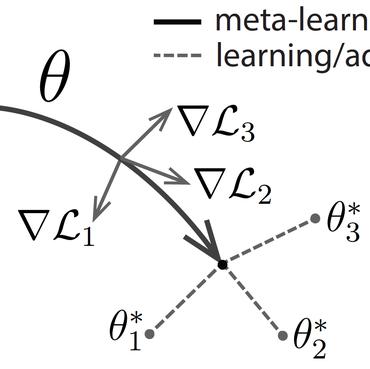Multi-Domain Learning by Meta-Learning: Taking Optimal Steps in Multi-Domain Loss Landscapes by Inner-Loop Learning
We consider a model-agnostic solution to the problem of Multi-Domain Learning (MDL) for multi-modal applications. Many existing MDL techniques are model-dependent solutions which explicitly require nontrivial architectural changes to construct domain-specific modules. Thus, properly applying these MDL techniques for new problems with well-established models, e.g. U-Net for semantic segmentation, may demand various low-level implementation efforts. In this paper, given emerging multi-modal data (e.g., various structural neuroimaging modalities), we aim to enable MDL purely algorithmically so that widely used neural networks can trivially achieve MDL in a model-independent manner. To this end, we consider a weighted loss function and extend it to an effective procedure by employing techniques from the recently active area of learning-to-learn (meta-learning). Specifically, we take inner-loop gradient steps to dynamically estimate posterior distributions over the hyperparameters of our loss function. Thus, our method is model-agnostic, requiring no additional model parameters and no network architecture changes; instead, only a few efficient algorithmic modifications are needed to improve performance in MDL. We demonstrate our solution to a fitting problem in medical imaging, specifically, in the automatic segmentation of white matter hyperintensity (WMH). We look at two neuroimaging modalities (T1-MR and FLAIR) with complementary information fitting for our problem.
PDF Abstract

